Should Street Arts Festivals Continue in the Era of COVID-19?
- Comprehensive Review of the Online Forums Held by Korea Street Arts Association -
Writer/ Rhanhee Lee
The chair of Korea Street Arts Association & Artistic director of the Ulsan Promenade Festival
Daily life with the coronavirus continues. All fields of the arts and culture scene have attempted diverse responses and strategies in order to survive in the changed environment. They have also engaged in so many discussions, trying to predict what the arts and culture scene would look like in the post-coronavirus era. Korea’s street arts, which have grown with festival platforms under the banner of cultural democracy, have cherished a large audience and their participation. In March 2020, COVID-19 spread throughout the world and such characteristics of the street arts became the genre’s innate limits. Where should art go as it is kicked out of streets and public spaces? Hit hard by the pandemic, those in the arts scene are barely surviving.
Absence of a Social Safety Net in the Street Arts and Alternatives for the Era of a New Normal
In April 2020, Korea Street Arts Association conducted a survey on the current state of coronavirus-related damage to the street arts. The association also held an online emergency forum to share current information on cancellation of street arts festivals or events in Korea and tendencies of relevant policies. When a festival is canceled, a huge number of artists and those working in temporary positions are hit hard. The participants of the forum freshly reviewed the arts and culture ecosystem based on festivals and discussed how they could rationally respond during and after the decision of canceling festivals. In particular, the participants pointed out the fact that there are blind spots generated by the contracts that don’t consider the characteristics of the creative environment of the street arts. In this context, they discussed problems of those contracts’ force majeure clauses regarding the cancellation of festivals or projects. They all agreed to the need of a standard contract for the street arts. After that, the association went on with heir follow-up discussion by sharing their recommendations based on what they had discussed and by forming a team doing research on the form of a standard contract.
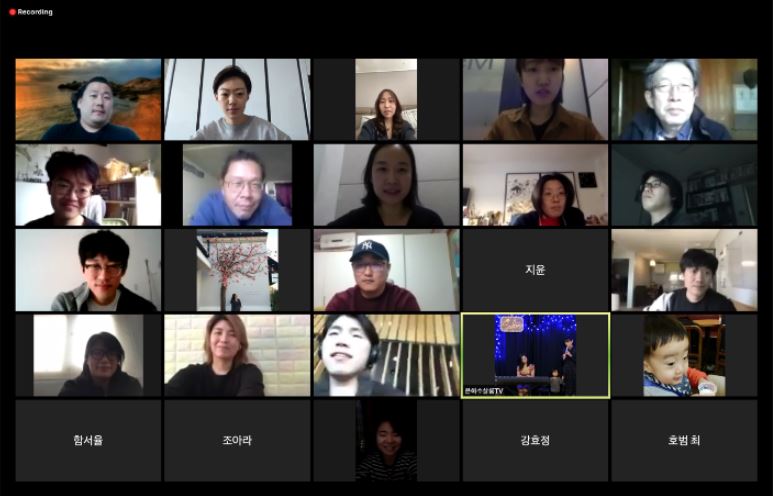
First online emergency forum ⓒRhanhee Lee
Afterward, they had their second online forum focused on themes like the new normal of the street arts and art forms for the post-coronavirus era. On this occasion, the participants discussed the following alternatives: 1. new ways of enjoying the street arts adopting and modifying things like diverse social distancing images symbolizing the coronavirus era, terrace concerts and drive-throughs and 2. online performances which have emerged as an untact alternative. Nevertheless, they kept discussing with uncertainty, wondering if the street arts could be presented as untact performances respecting social distancing in its essence and if such a form could be called a new normal. Some participants said that COVID-19 would lead people to value the performing arts’ liveness and immediate communication with the audience. On the other hand, others were concerned that even if people’s daily lives get back to normal after the pandemic, they may change their attitude and feel uneasy about the existence of street artists. The participants were also afraid that people may not visit festivals. They also continued to argue that public organizations and festivals should strengthen their support system for artists’ survival and their education opportunities for the future at the same time.
Should the Street Arts Continue Despite This?
The third forum took place on July 31 with Gwangmyeong Cultural Foundation which ran this online forum designed to prepare for the era of a new normal. During the forum, the participants shared concrete cases of how to run street arts festivals for the second half of 2020, focusing on the Gwangmyeong Family Theater Festival Forum co-organized by Korea Street Arts Association. In this context, they drive into the meanings and values that are actually generated by the existing discussions on the new normal of the street arts.
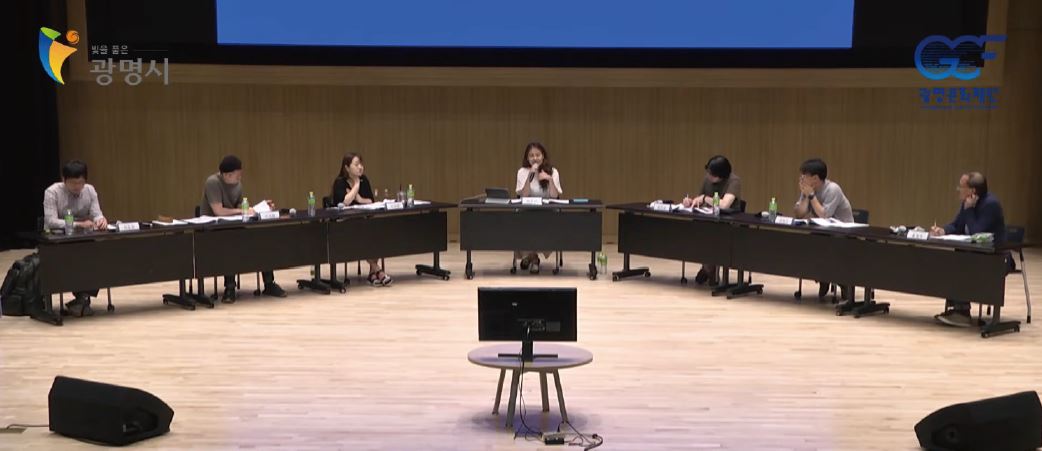
Third online forum ⓒRhanhee Lee
Held under the theme of “Despite This, We Have the Street Arts: (Im)possibility of Street Arts Festivals in the Era of COVID-19 and Changed Values,” this forum kicked off with a rather daunting question: “Should street arts festivals continue during the COVID-19 era?”
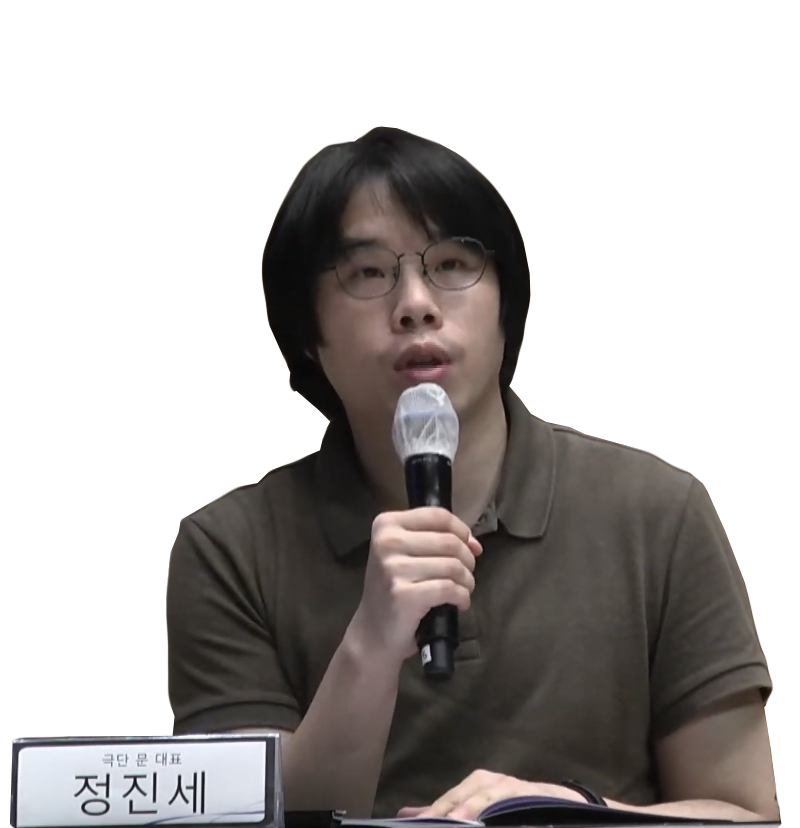 Jeong Jin-se, playwright of Theatre-Moon, started his keynote by saying that street arts festivals can’t continue in this way. According to him, social distancing and untact communication are fatal to street artists and street arts festivals should come up with new ways of presenting themselves. The festivals should reflect on how they have excluded those who can’t come out to the streets and on how they have lacked understanding of streets (including nature) and life. Such reflection should lead to concrete activities such as barrier free and plastic free campaigns and for the street arts and festivals of the future, art should be transformed into “technology that is beneficial both environmentally and socially.” Moreover, if citizens have used festivals as a means to delegate to street artists the right to speak, artists should now think about what to say. For street arts festivals, the only consensus reached by the audience, artists and the public must not be the value of consumption but it must be safety: that of the planet Earth, the environment and society. It is what the participants emphasized during the forum.
Jeong Jin-se, playwright of Theatre-Moon, started his keynote by saying that street arts festivals can’t continue in this way. According to him, social distancing and untact communication are fatal to street artists and street arts festivals should come up with new ways of presenting themselves. The festivals should reflect on how they have excluded those who can’t come out to the streets and on how they have lacked understanding of streets (including nature) and life. Such reflection should lead to concrete activities such as barrier free and plastic free campaigns and for the street arts and festivals of the future, art should be transformed into “technology that is beneficial both environmentally and socially.” Moreover, if citizens have used festivals as a means to delegate to street artists the right to speak, artists should now think about what to say. For street arts festivals, the only consensus reached by the audience, artists and the public must not be the value of consumption but it must be safety: that of the planet Earth, the environment and society. It is what the participants emphasized during the forum.
Diversification of Space and Time, Permeation into Daily Life and Festivity in a Changed Lifestyle
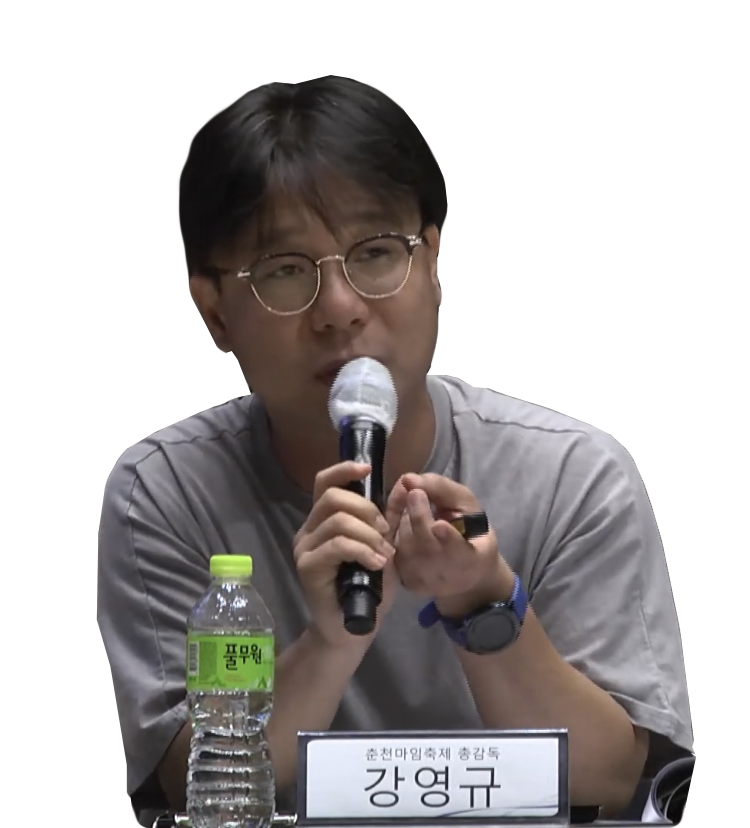 After the keynote, the speakers gave presentations on cases of four festivals and one street artist. Kang Young-gyu, director of the Chuncheon International Mime Festival, introduced the Chuncheon Mime 100Scene Project, which was newly planned after the cancellation of the Chuncheon International Mime Festival in May 2020. He explained that he wanted to transform the existing image of the festival, which had been close to a large-scale, temporary and consumption-oriented club, into a safe, sustainable and productive one. The transformation is basically about widening the scope of programs, spaces and audiences, conducting diverse programs on a daily, repeated basis and conveying a message of transition and symbiosis. Mr. Kang also mentioned the response of citizens in Chuncheon City, saying that the artists’ unexpected imaginations seem to give cheerful consolation to the citizens suffering from the stress that had accumulated with the long-term battle with COVID-19.
After the keynote, the speakers gave presentations on cases of four festivals and one street artist. Kang Young-gyu, director of the Chuncheon International Mime Festival, introduced the Chuncheon Mime 100Scene Project, which was newly planned after the cancellation of the Chuncheon International Mime Festival in May 2020. He explained that he wanted to transform the existing image of the festival, which had been close to a large-scale, temporary and consumption-oriented club, into a safe, sustainable and productive one. The transformation is basically about widening the scope of programs, spaces and audiences, conducting diverse programs on a daily, repeated basis and conveying a message of transition and symbiosis. Mr. Kang also mentioned the response of citizens in Chuncheon City, saying that the artists’ unexpected imaginations seem to give cheerful consolation to the citizens suffering from the stress that had accumulated with the long-term battle with COVID-19.
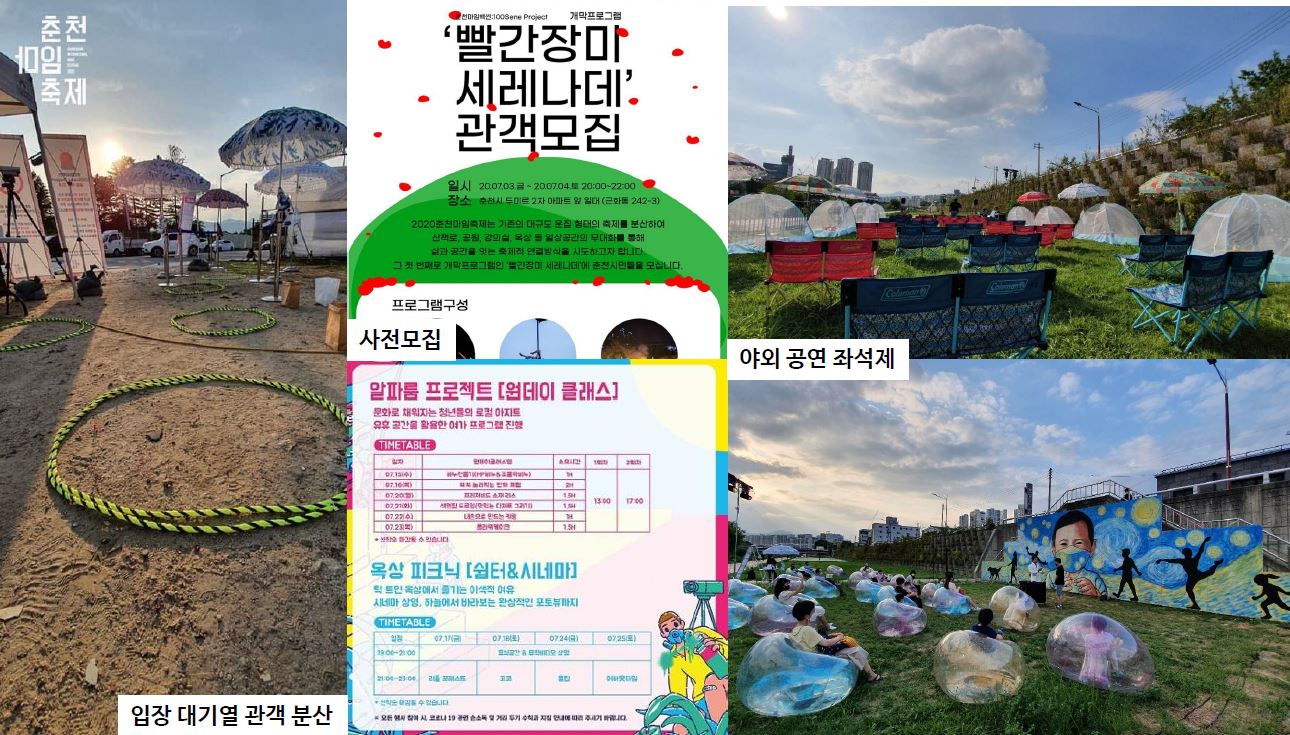
Chuncheon Mime 100Scene Project of Chuncheon International Mime Festival ⓒRhanhee Lee
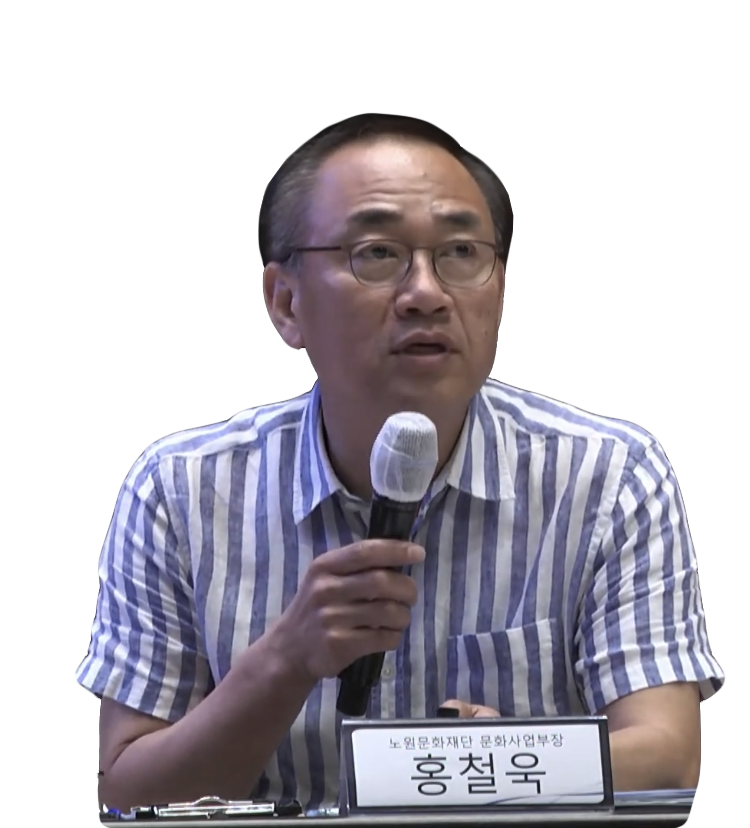
Hong Cheol-wook, director in charge of cultural projects at Nowon Cultural Foundation, explained that he had decided to organize a festival at the Gyeongchun Line Forest Trail. Mr. Hong had discovered this place while trying to avoid crowded venues amid the coronavirus pandemic. He then elaborated on the case of the street arts at the Gyeongchun Line Forest Trail. He also stressed the importance of trust-based relationships with local residents. According to him, people are aware that it is time for the local district to actively carry out cultural events that could help local residents beat the coronavirus blues and provide them with healing moments. The residents have supported and trusted him, thus helping him organize the event.
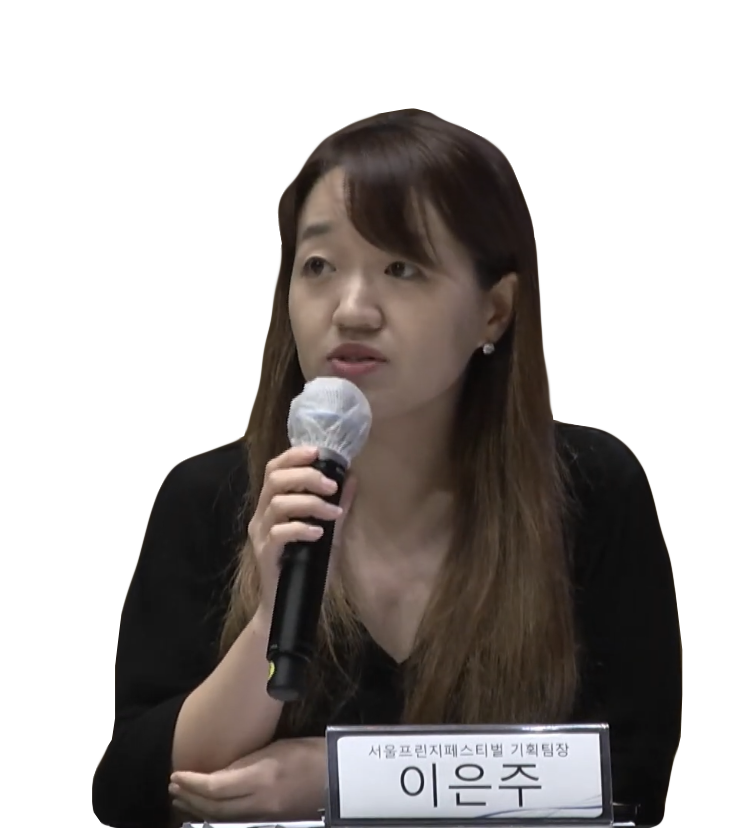 Lee Eun-ju, planning director of the Seoul Fringe Festival, explained that she was preparing for a festival in two tracks: offline and online (untact) ones. As for the offline one, the festival will make utmost efforts to respect COVID-19 guidelines in the space. A COVID-19 task force has also been formed to come up with rules applying to different groups of the festival. When it comes to the online festival, they have made a variety of goods in an attempt to enable the audience to feel the liveness of the festival at home. They have also prepared an online, game like platform comparable to a festival space. At the same time, they signed copyright agreements with artists, considering video streaming which has become an sensitive issue. In this way, they have made sure that performance videos wouldn’t be distributed for free. According to Ms. Lee, the uncertainty regarding the use of public spaces is a big risk factor as a private festival. What is also frustrating is the fact that it is not easy to communicate with some institutions that have been regarded as partners. A safe festival can’t be achieved only with artists’ ideas and private organizations’ willingness. Saying this, she emphasized the importance of public institutions’ open-mindedness toward small attempts.
Lee Eun-ju, planning director of the Seoul Fringe Festival, explained that she was preparing for a festival in two tracks: offline and online (untact) ones. As for the offline one, the festival will make utmost efforts to respect COVID-19 guidelines in the space. A COVID-19 task force has also been formed to come up with rules applying to different groups of the festival. When it comes to the online festival, they have made a variety of goods in an attempt to enable the audience to feel the liveness of the festival at home. They have also prepared an online, game like platform comparable to a festival space. At the same time, they signed copyright agreements with artists, considering video streaming which has become an sensitive issue. In this way, they have made sure that performance videos wouldn’t be distributed for free. According to Ms. Lee, the uncertainty regarding the use of public spaces is a big risk factor as a private festival. What is also frustrating is the fact that it is not easy to communicate with some institutions that have been regarded as partners. A safe festival can’t be achieved only with artists’ ideas and private organizations’ willingness. Saying this, she emphasized the importance of public institutions’ open-mindedness toward small attempts.
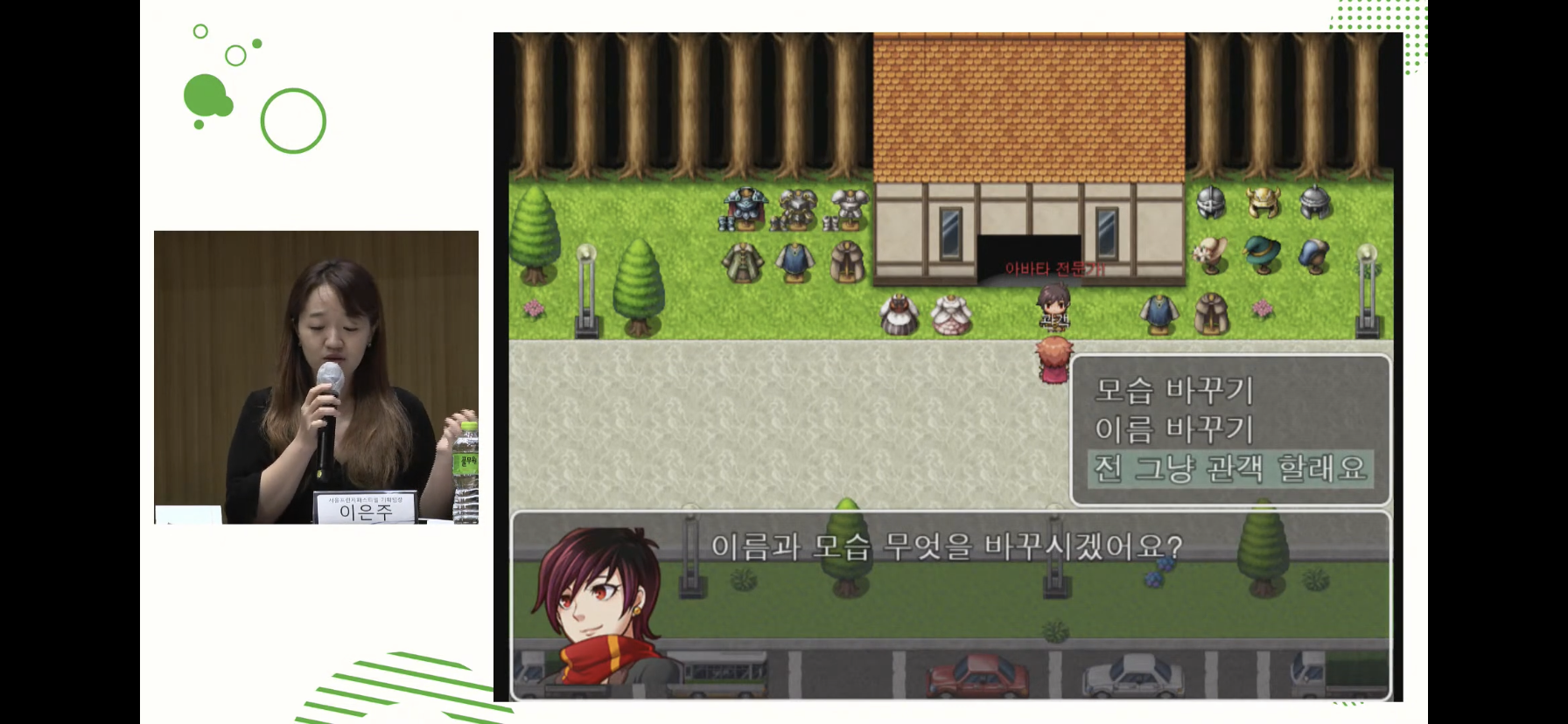
Introducing the online version of 2020 Seoul Fringe Festival ⓒRhanhee Lee
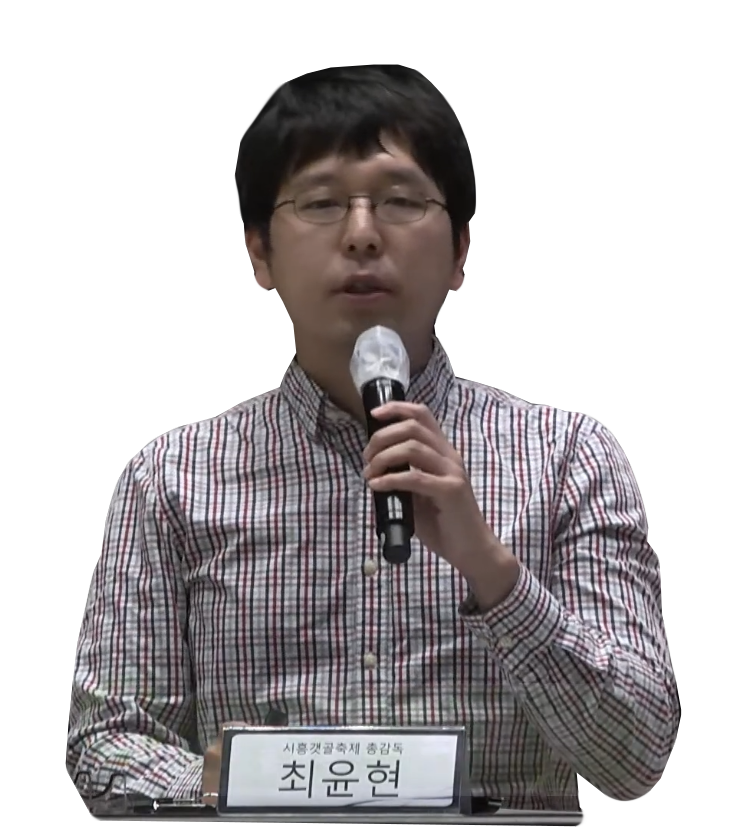 Choi Yun-hyun, director of the Sihueng Tidal Channel Festival, talked about the online version of the festival for this year. Mr. Choi shared his concerns about how to realize a local festival’s important values online. The online festival mainly consists in extending the festival period and diversifying venues. Such social distancing of space and time would lead to a safe festival platform. Mr. Choi also shared the festival’s diverse programs designed to ensure online participation, experiences, connections and practice. This means that regardless of the changed environment during the pandamic, a festival’s fundamental values such as enjoyability, spontaneity and community spirit are still valid. Mr. Choi’s festival seems to be the result of reflecting on how such values could be kept intact in an untact setting.
Choi Yun-hyun, director of the Sihueng Tidal Channel Festival, talked about the online version of the festival for this year. Mr. Choi shared his concerns about how to realize a local festival’s important values online. The online festival mainly consists in extending the festival period and diversifying venues. Such social distancing of space and time would lead to a safe festival platform. Mr. Choi also shared the festival’s diverse programs designed to ensure online participation, experiences, connections and practice. This means that regardless of the changed environment during the pandamic, a festival’s fundamental values such as enjoyability, spontaneity and community spirit are still valid. Mr. Choi’s festival seems to be the result of reflecting on how such values could be kept intact in an untact setting.
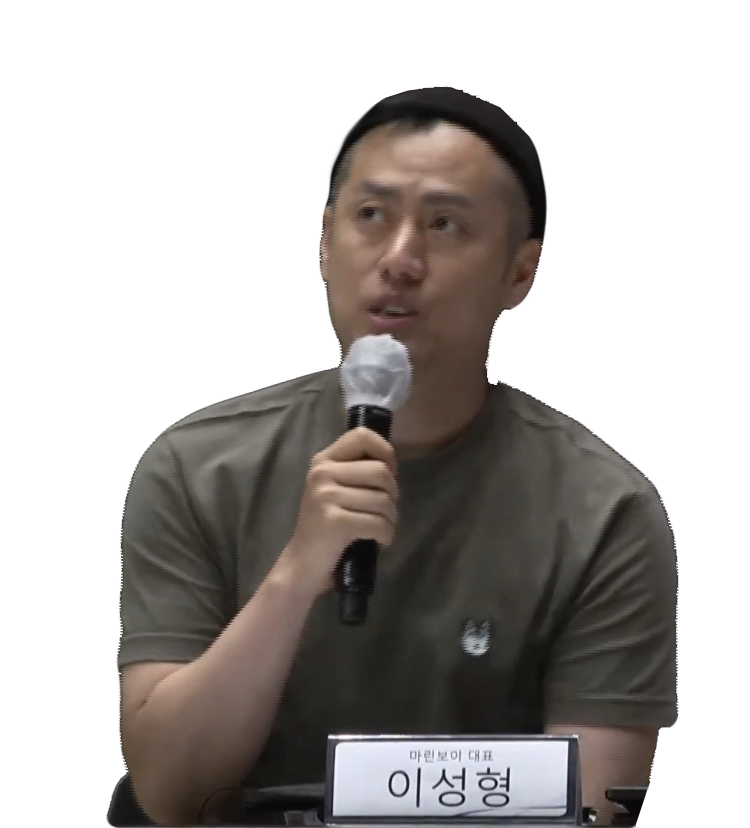 As the speakers representing different types of festivals told their own stories, street artist Lee Seong-hyung (Marine Boy) spoke under the theme of “Performing the Street Arts at Festivals in the Era of COVID-19.” During his presentation, Mr. Lee asked serious questions to protect his art and survive as an artist. According to Mr. Lee, even if festivals may not be held during the crisis of an infectious disease and climate change, art must exist even in that situation. In this context, he said that it is necessary to think seriously about how to participate in festivals, what art form to adopt, how to change the creative process and how to treat the audience. He has gone beyond the period of missing the stage, street and audience and he is now increasingly afraid of not being able to return. He emphasized the fact that artists also need consolation and healing.
As the speakers representing different types of festivals told their own stories, street artist Lee Seong-hyung (Marine Boy) spoke under the theme of “Performing the Street Arts at Festivals in the Era of COVID-19.” During his presentation, Mr. Lee asked serious questions to protect his art and survive as an artist. According to Mr. Lee, even if festivals may not be held during the crisis of an infectious disease and climate change, art must exist even in that situation. In this context, he said that it is necessary to think seriously about how to participate in festivals, what art form to adopt, how to change the creative process and how to treat the audience. He has gone beyond the period of missing the stage, street and audience and he is now increasingly afraid of not being able to return. He emphasized the fact that artists also need consolation and healing.
For a Comprehensive Survival Strategy Called Safety
During the discussion that followed the presentations, the participants made different suggestions regarding the new values of the street arts in the changed environment. They agreed to a certain degree that it is necessary to change the liveness of the street arts, ways to enjoy art in daily life and thoughts about the street as a public space. In this regard, they appreciated the efforts and devotion of those who organize festivals by coming up with safe ways during the challenging period. The three forums allowed us to understand the existence of different groups of people related to festivals. The forums also made us understand that those that need care are interconnected organically.
Through the questions asked by the arts, some people feel comfort and joy, others experience new discoveries and changes in perception. Still others look around and feel that they are connected. This is how the values of festivals are changing in the era of COVID-19.
The participants wrapped up the forum by saying that amid street arts festivals’ courageous methodologies of how, they must never forget to ask themselves why. Why should the street arts and street arts festivals, which have taken place in safe spaces in a safe way so far, exist on streets that are not safe anymore? To show why is a great challenge we are facing.
Writer/ Rhanhee Lee
Rhanhee Lee is working as a planner of festivals and street arts performances. She is currently the chair of Korea Street Arts Association and artistic director of the Ulsan Promenade Festival. She is also teaching festival management at Korea National University of Arts. ludicompany@gmail.com
※Links to the References
1. Source Book of the 1st Online Forum of Korea Street Arts Association:
https://drive.google.com/file/d/1saSU76A8Kcw1VJeXUkb8HHhJgcluwmyc/view
2. Source Book of the 2nd Online Forum of Korea Street Arts Association:
https://drive.google.com/file/d/1DdEwR7TG_TgVvWlf72YPaW-9yah1wu7L/view
3. Source Book of the 3rd Online Forum of Korea Street Arts Association:
https://drive.google.com/file/d/1kbLoF9zR9ImZLOSMOts4FR7h2qe-oJBy/view








 PREV
PREV
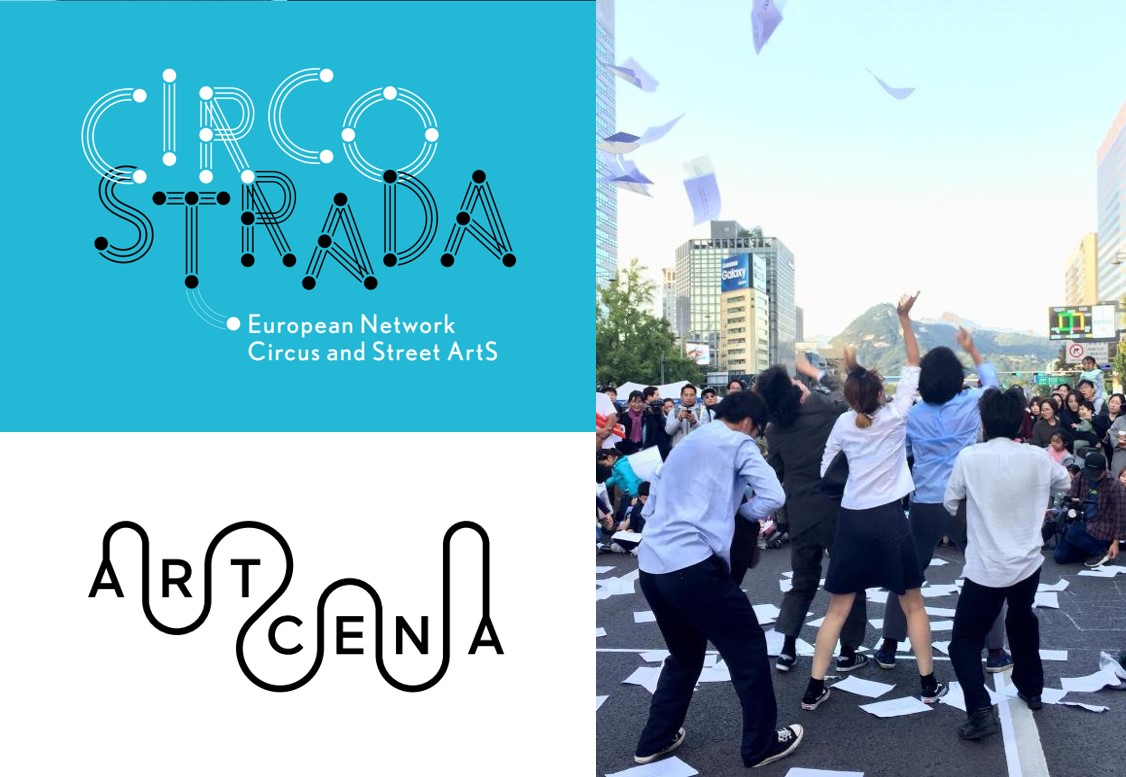
.jpg)
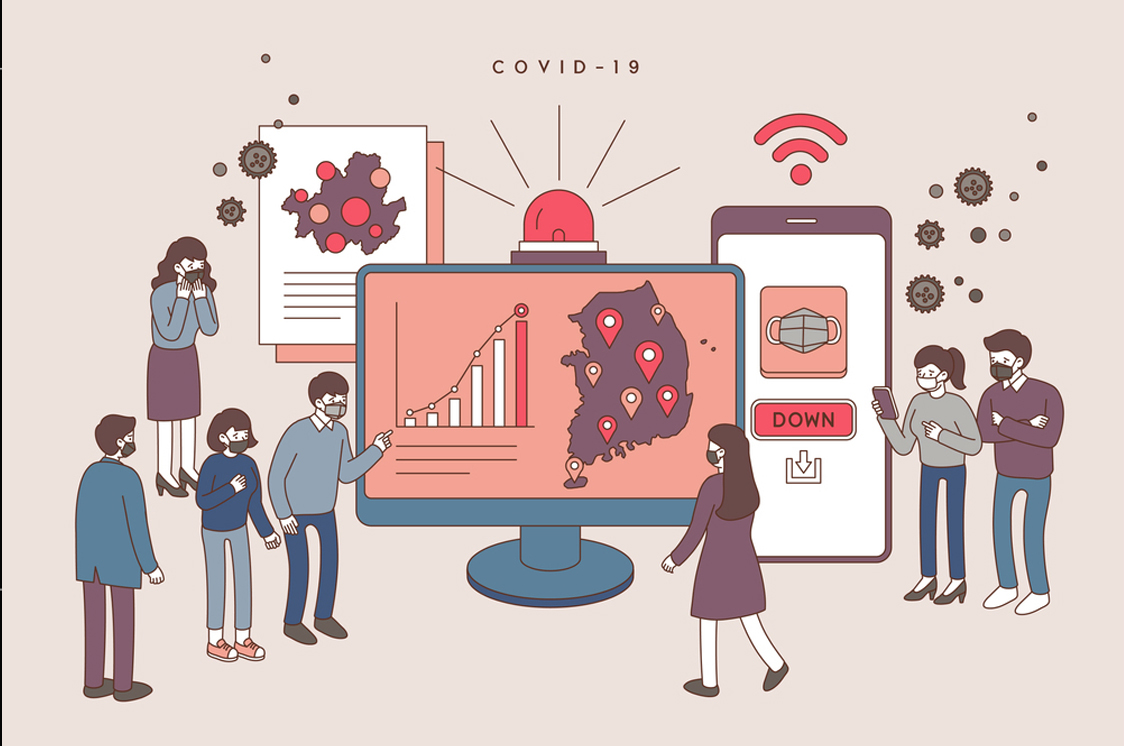
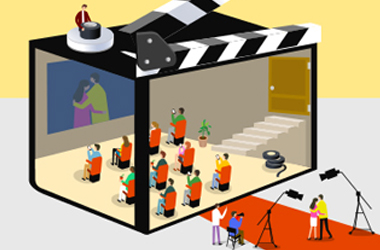
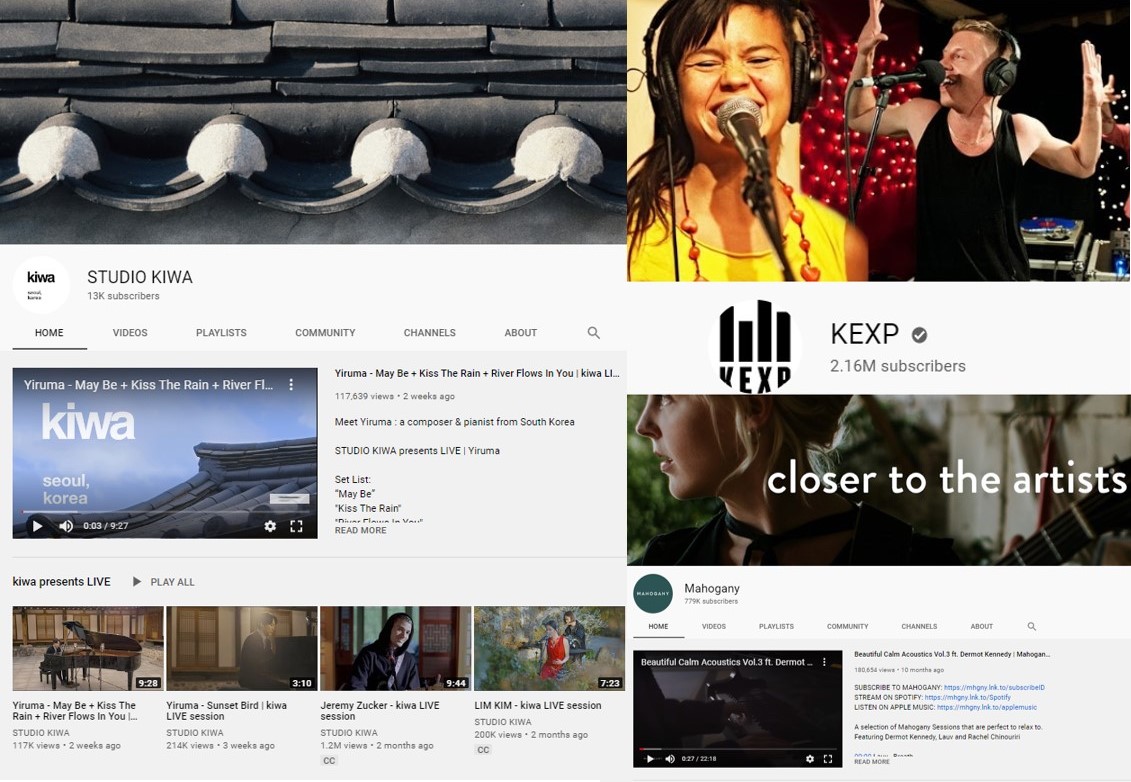
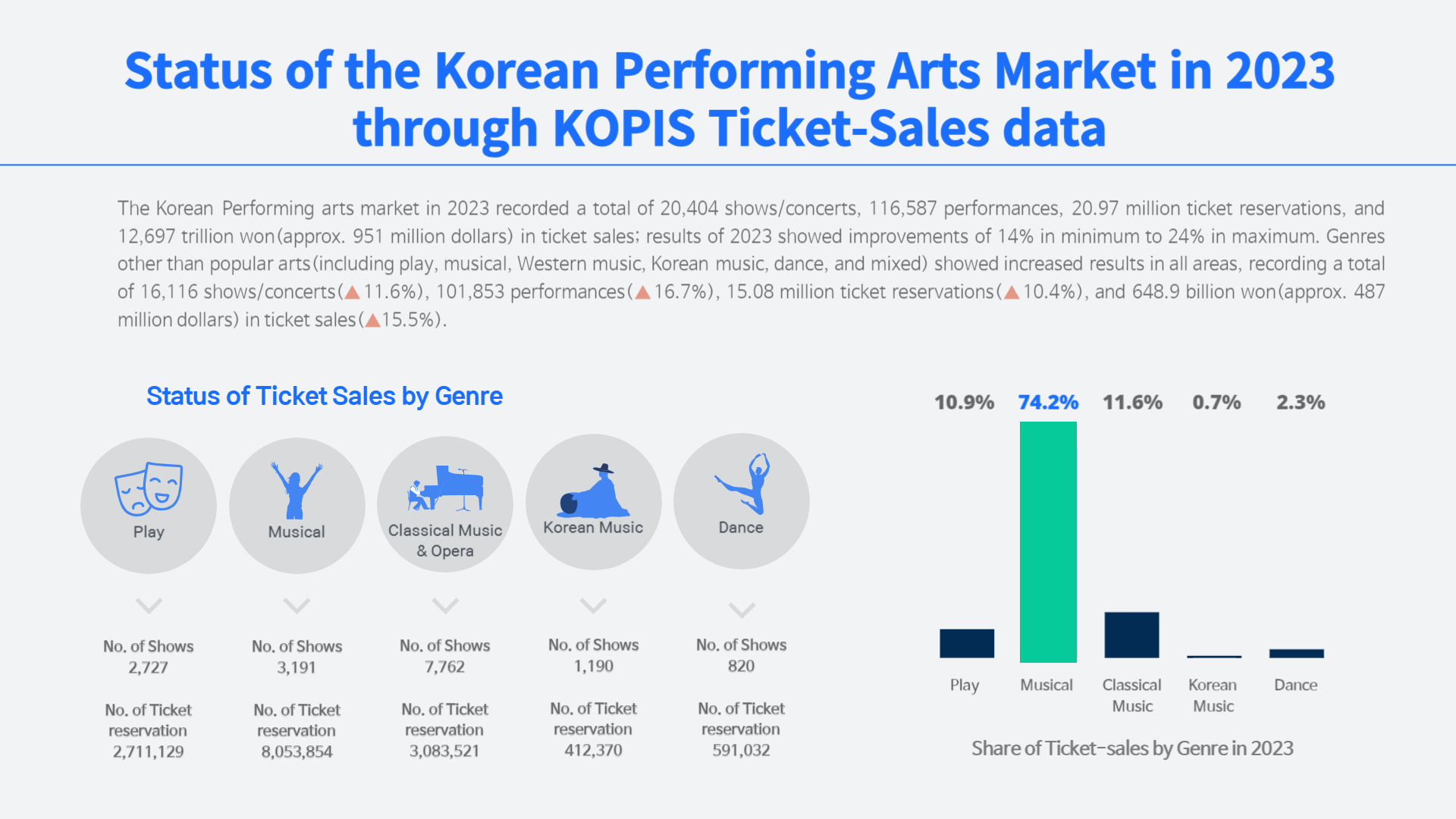
.jpg)
.jpg)
.jpg)
.jpg)











